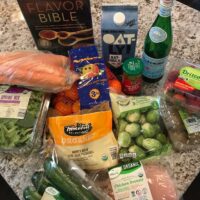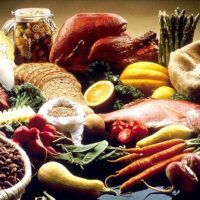The Gluten Thing: Fad or Fact, Final Week
Today I’m going to wrap up this topic. Not because I’ve covered everything that there is to know about gluten, but because there are other topics I’d like to cover before summer arrives.
That being the case, if you are struggling with how to manage a gluten-free lifestyle and enjoy great food, we need to talk. I’ve been practicing for several years now.
Gluten can sometimes be found in ingredients that you’d not expect. It’s tough to avoid something when you don’t know that you should—like licking envelopes. 
While this is not a complete list, here are some names that are often code for gluten:
- Caramel color (frequently made from barley)
- Hydrolysate
- Hydrolyzed malt extract
- Hydrolyzed vegetable protein
- Maltodextrin
- Modified food starch
- Natural flavoring
- Yeast extract
- Soy protein
- Vegetable protein
This is another reason why it is important to eat a diet that consists primarily of whole foods. Long lists of ingredients often lead to food that isn’t that good—taste wise and for you.
5 Tips to Help You Eat Gluten-Free Deliciously
- You’ve heard this one before, yet it can’t be overstated: When grocery shopping, stick primarily to the perimeter of the store, where whole, nature-made foods live. Avoid the middle aisles which are filled with processed foods.
- Make a shopping list and don’t grocery shop when you’re hungry. Crazy things end up coming home with you when you skip this tip. Been there, done that.
- On those occasions when I’d like a special treat, I’ve found that Namaste Gluten Free Perfect Flour Blend, as well as King Arthur GF flour, work very well. Recipes using their products can be found on their websites.

- For convenience foods (like crackers, muffin mixes) made with real and healthy ingredients, look for Simple Mills. You can pronounce the ingredients and your body will recognize them as real food.
- These products can be found at most local groceries. I also like to shop at vitacost.com. When I’ve left products in my shopping cart for a day or so, I often get an email with a coupon and reminder to finish my shopping.
May is Celiac Awareness Month and vitacost.com is offering 15% off on select gluten-free foods.
To learn MUCH more about how gluten and grains affect us, a great book is Grain Brain by Dr. David Perlmutter.
Enjoy the lilacs of May.
Much love,
Carol
“Food is medicine. We can actually change our gene expressions with the foods we eat.”—David Perlmutter






